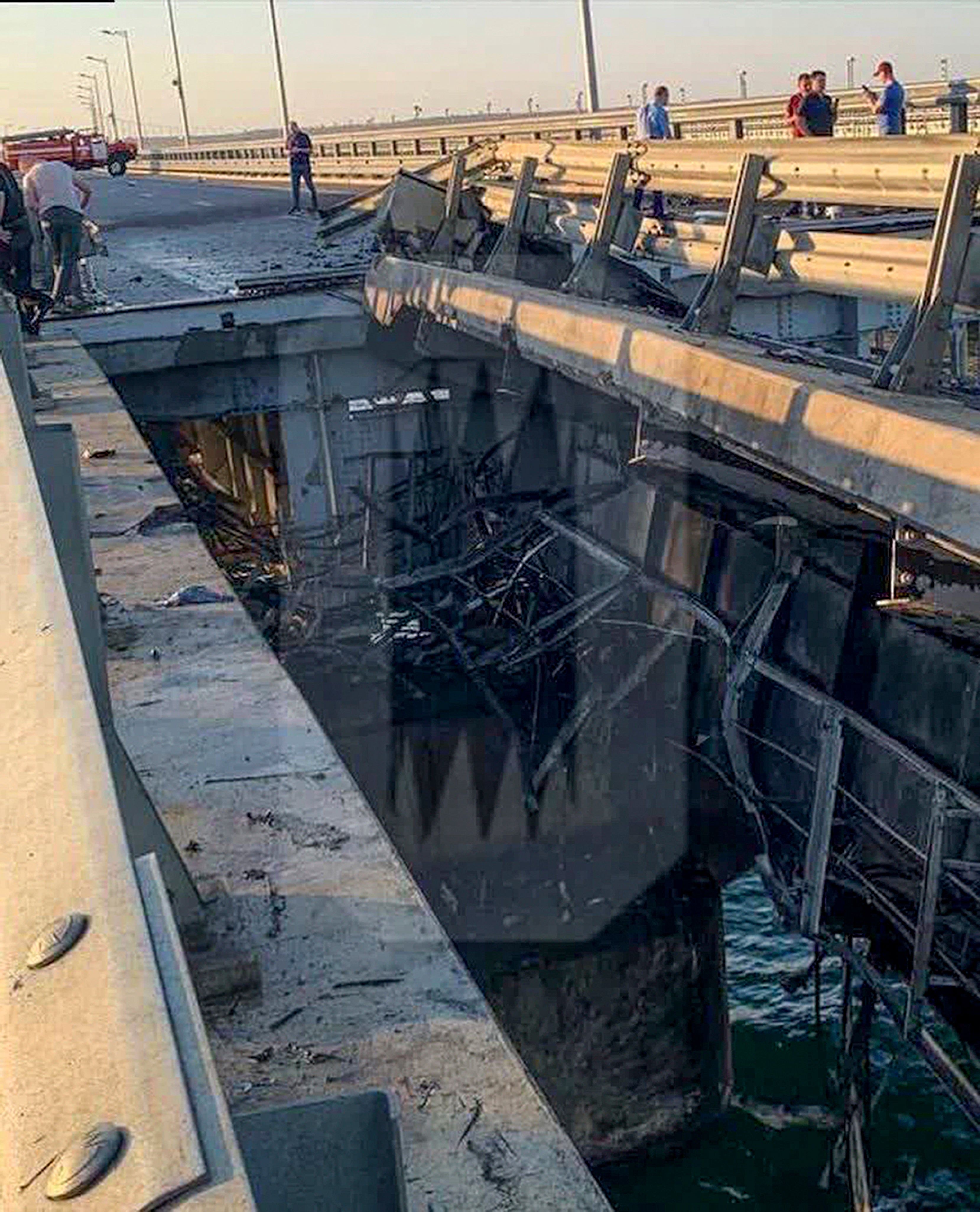What the Crimea bridge attack means for Ukraine’s counteroffensive
The assault was a reminder to the Russian people that the conflict is not restricted to a foreign land, writes Kim Sengupta


The last time the Kerch Bridge was attacked in this war was nine months ago, the day after Vladimir Putin’s 70th birthday. The Ukrainians put out a video of Marilyn Monroe singing “Happy birthday, Mr President” with footage of flames and rubble in the background.
Retaliation took the form of swarms of drones striking Kyiv after weeks of relative lull, and S-300 missile attacks in the Donbas. In the town of Slovyansk we saw the bodies of a young family who had fled there from the front line.
The Russians blamed Western special forces, from Britain in particular, for the explosion on one of the Russian president’s vanity projects, which had become a key logistical route for Moscow’s forces following the invasion.
The latest attack was on a part of the bridge less used by Russian forces, but still an important link. A couple from the Belgorod region, near the border, were killed, and their daughter was injured, according to local officials.
The attack came just weeks after Putin claimed that Ukrainian forces were suffering “catastrophic” losses in their ongoing counteroffensive, and insisted that he could order the seizure of more land to protect Russia’s frontiers. “We will have to consider creating a sanitary zone in Ukraine to prevent it from striking our territory,” he warned.
The assault on the bridge shows that even if a new “sanitary zone” is established, it is unlikely to be enough to stop Ukraine – armed with modern Western drones, missiles and artillery – from inflicting destruction inside Russia.
The Ukrainian military said the attack was a joint operation between the SBU (Ukraine’s intelligence service) and the navy. Presidential aide Mykhailo Podolyak tweeted: “Any illegal structures used to deliver Russian instruments of mass murder are necessarily short-lived ...”.
Maria Zakharova, the Kremlin’s foreign affairs spokesperson, described what had happened as a “terrorist” act. She went on to say: “Decisions are made by Ukrainian officials and the military with the direct participation of American and British intelligence agencies and politicians. The US and Britain are in charge of a terrorist state structure.”
Ukrainian drone strikes on the Kremlin, raids by exiled Russian paramilitaries, and the extraordinary attempted march on Moscow by Yevgeny Prigozhin’s Wagner fighters have brought the war home for people in Russia. The bridge attack is another reminder that the conflict is not restricted to a foreign land.
Since the illegal annexation of Crimea nine years ago by the Kremlin, around 800,000 Russians have settled there, while large numbers from the Ukrainian and Tartar communities have left.
As the conflict continued, some of those Russians left Crimea for safer areas. Ukrainian officials say that those who remain when Crimea is liberated will be deported.
It is far from certain that Ukraine will get Crimea back. But, as the current offensive grinds on, with its limited and slow reclamation of territory, the Kerch attack is a potent symbol and will boost morale.



Join our commenting forum
Join thought-provoking conversations, follow other Independent readers and see their replies
6Comments